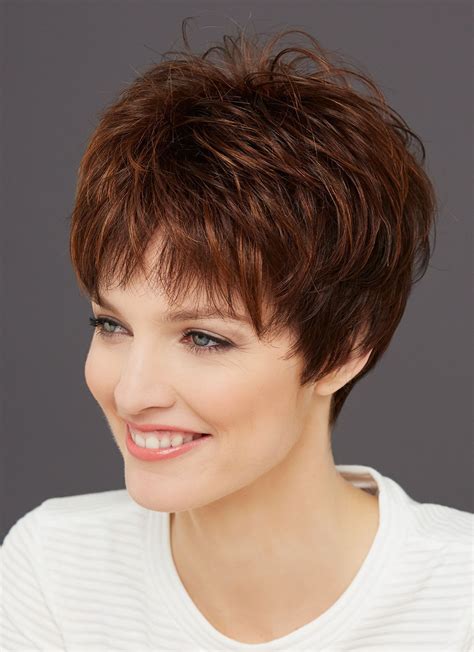Over 60% of Women Experience Hair Loss

As women age, they may experience hair loss due to factors such as genetics, hormonal changes, and medical treatments. Wigs can offer a stylish and convenient solution for women over 60 to regain their confidence.
Types of Wigs for Women Over 60
- Human Hair Wigs: Natural and versatile, but requires regular maintenance.
- Synthetic Hair Wigs: Durable and affordable, but may feel less natural.
- Lace Front Wigs: Creates a realistic hairline by hand-tying hair onto a lace base.
- Capless Wigs: Lightweight and breathable, but may not be as secure.
- Monofilament Wigs: Mimics the natural scalp by using a sheer fabric base.
Choosing the Right Wig for Your Needs
- Consider Your Hair Loss Pattern: Wigs come in different sizes and styles to accommodate various hair loss patterns.
- Match Your Natural Hair Color and Texture: Select a wig that closely resembles your natural hair to create a seamless look.
- Determine the Desired Length and Volume: Choose a wig that complements your face shape and lifestyle.
- Explore Different Cap Constructions: Research the different cap types to find one that suits your comfort and security needs.
Styling Tips and Tricks
- Use Heat Tools Sparingly: Heat can damage synthetic hair wigs.
- Brush Regularly: Gently brush your wig with a wide-tooth comb to prevent tangles.
- Avoid Overwashing: Wash your wig every 8-12 wears to maintain its shape and texture.
- Protect from Sun and Heat: Store your wig in a cool, dry place away from direct sunlight.
- Trim Split Ends: Regular trims can remove damaged hair and keep your wig looking its best.
Common Mistakes to Avoid
- Wearing Wigs Too Tight: Causes discomfort and can lead to hair breakage.
- Not Blending the Wig: Visible seams or an unnatural hairline can ruin the illusion.
- Using the Wrong Hair Products: Regular hair products can damage or discolor wigs.
- Overusing Heat: Excessive heat can dry out and weaken hair fibers.
- Neglecting Maintenance: Regular cleaning, brushing, and styling are essential for wig longevity.
Step-by-Step Wig Application
- Prepare Your Hair: Gather your hair into a bun or ponytail.
- Apply a Cap: Wear a wig cap to smooth your hair and create a secure base.
- Position the Wig: Gently place the wig on your head and adjust it until it fits comfortably.
- Secure the Wig: Use wig clips or adhesive to fix the wig in place.
- Style the Wig: Use a gentle touch to style the wig using brushes, combs, and hairspray.
Conclusion
Wigs can empower women over 60 to overcome hair loss and express their personal style with confidence. By following these tips, choosing the right wig, and maintaining it properly, women can enjoy the benefits of beautiful and natural-looking hair well into their golden years.
Appendix
Table 1: Wig Cap Constructions
| Cap Type | Description |
|---|---|
| Weft | Traditional construction with hair sewn onto fabric strips |
| Monofilament | Sheer fabric that mimics the natural scalp |
| Capless | Lightweight and breathable, with hair attached to a mesh base |
| Lace Front | Hand-tied hair on a lace base for a realistic hairline |
Table 2: Wig Types for Different Hair Loss Patterns
| Hair Loss Pattern | Wig Recommendation |
|---|---|
| Thinning Hair | Capless or monofilament wig |
| Partial Hair Loss | Lace front or monofilament wig |
| Total Hair Loss | Full-cap wig or human hair wig |
Table 3: Hair Products for Wigs
| Product Type | Purpose |
|---|---|
| Shampoo | Gently cleanse hair fibers |
| Conditioner | Moisturize and detangle hair |
| Styling Gel | Hold hair in place without weighing it down |
| Hairspray | Add volume and prevent flyaways |
Table 4: Wig Maintenance Schedule
| Maintenance Task | Frequency |
|---|---|
| Brushing | Daily |
| Washing | Every 8-12 wears |
| Drying | Air dry or use a low heat blow dryer |
| Styling | As needed |
| Trimming | Every 4-6 months |
